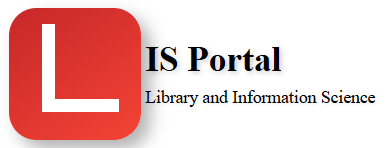DSpace: An Open-Source Solution for Digital Repositories
Empowering Researchers and Institutions to Archive and Share Knowledge
What is DSpace?
DSpace is an open-source software platform designed to facilitate the creation and management of digital repositories. Initially launched in 2002, DSpace has become a vital tool for academic institutions, libraries, and research organizations worldwide. It enables users to easily store, manage, and access digital content, providing long-term preservation and access to scholarly works.
DSpace serves a critical role in the open-access movement by allowing organizations to build open digital repositories that are fully customizable to their specific needs. Whether you are an academic institution, a non-profit organization, or a commercial entity, DSpace is the software of choice for managing digital content.
Core Technical Features of DSpace
DSpace is built with flexibility and extensibility in mind, supporting a wide range of digital content management features. Below are some of the key technical standards and integrations that make DSpace a robust solution for digital repositories:
1. Standards Supported by DSpace
| Standard | Description |
|---|---|
| Metadata | DSpace uses standardized metadata formats like Dublin Core for cataloging and discovery of digital assets. |
| Atom | A web feed format used for syndicating and sharing metadata, ensuring easy integration with other platforms. |
| HAL | Ensures DSpace’s data is accessible and easily discoverable by simplifying the development of hypermedia APIs. |
| IIIF (International Image Interoperability Framework) | Enables rich interaction with images, offering tools for zooming and comparing images from different repositories. |
| JSON (JavaScript Object Notation) | DSpace uses JSON for transferring metadata in a lightweight and human-readable format. |
| METS (Metadata Encoding and Transmission Standard) | METS allows encoding and preservation of complex digital objects, ensuring efficient organization of multiple files. |
| OAI-PMH (Open Archives Initiative Protocol for Metadata Harvesting) | Enables repositories to share metadata with other systems, increasing the discoverability of research content. |
| OpenAIRE Guidelines | Improves accessibility and discoverability of open research data in Europe, supporting seamless integration with European open data initiatives. |
| RESTful APIs | Supports easy integration with other systems, enhancing DSpace’s extendability. |
| Signposting | Organizes and accesses digital resources, ensuring content is easily found and indexed. |
| SWORD (Simple Web-service Offering Repository Deposit) | Enables content deposits from external systems into DSpace repositories. |
| Persistent Identifiers | Supports ORCiD and ROR for linking researchers and their institutional affiliations to their works. |
2. Preservation Standards
DSpace meets the OAIS (Open Archival Information System) standard, which is an internationally recognized framework for digital preservation, ensuring that the digital content stored in a DSpace repository is preserved for the long term, safeguarding research data and scholarly works against digital obsolescence.
3. Metrics
To support the analysis of repository usage, DSpace integrates with COUNTER 5, a widely adopted standard for reporting and measuring usage statistics in academic and research repositories. COUNTER 5 provides detailed, standardized usage reports to help repository managers understand the impact and reach of their digital content.
4. Integrations with Other Platforms
DSpace supports seamless integration with a range of external platforms and services, enabling institutions to extend the reach and utility of their repositories. Some of the key integrations include:
| Platform | Integration |
|---|---|
| arXiv | A popular open-access repository for scholarly articles in fields like physics, mathematics, and computer science. |
| Creative Commons Licenses | Supports open licensing to make content freely available for reuse and redistribution. |
| Crossref | Integrates with Crossref for DOI registration, enabling content to be cited and tracked across academic networks. |
| DataCite | Allows researchers to register datasets with DOIs, making research data more discoverable and properly cited. |
| Europe PMC | Integrates with Europe PMC, providing access to life sciences and biomedical research articles. |
| Mirador | A viewer that supports rich image interaction, allowing users to zoom and compare images from multiple repositories. |
| Research Organization Registry (ROR) | Ensures that research organizations are properly identified and linked to scholarly outputs. |
| Sherpa Services (Romeo, Juliet, OpenDOAR) | Helps manage open access policies and ensures compliance with publisher policies. |
| VuFind | An open-source discovery layer for library catalogs and digital repositories. |
Other Integrations
DSpace also integrates with a variety of other platforms and tools, including:
| Platform | Description |
|---|---|
| Handle Systems | Assigns persistent identifiers (handles) to digital objects, ensuring they remain accessible over time. |
| ORCID | Links research outputs to researchers’ personal and professional records, ensuring proper attribution. |
| OpenAIRE | Supports open access to research outputs, data, and publications, ensuring compliance with European standards. |
| Astrophysics Data System (ADS) | Provides access to scientific papers in astronomy and astrophysics, linking DSpace repositories to this field. |
| CiNii | A Japanese academic database, making DSpace repositories accessible to the Japanese research community. |
| European Patent Office (EPO) | Links research outputs to patent data, providing a connection between academic research and intellectual property. |
| PubMed | Links DSpace repositories to biomedical literature and research content. |
| SciELO | A digital library providing access to Latin American and Caribbean scientific journals. |
| Scopus and Web of Science | Ensures research outputs are indexed and can be found through major academic search engines. |
| Google Analytics and Google reCAPTCHA | Provides insights into user behavior and security for DSpace installations. |
| IRUS (Institutional Repository Usage Statistics) | Provides detailed statistics on repository usage, enabling better management and impact analysis. |
